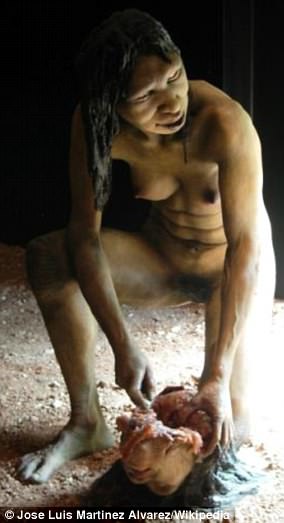Ancient human ancestors ate small children 850,000 years ago, a gruesome discovery suggests.
Archaeologists working at the Gran Dolina cave site in Atapuerca, northern Spain, have unearthed a human neck bone belonging to a child who died sometime between the ages of two and four.
It features clear butchery marks, providing direct evidence the infant was decapitated and cannibalised, they said.
The vertebra was found with other bones and teeth belonging to Homo antecessor – thought to be the last common ancestor of both Homo sapiens and Neanderthals.
It was uncovered by a team from the Catalan Institute of Human Paleoecology and Social Evolution (IPHES), who have been excavating the site for over three decades.
Nearly a third of all bones found in the cave so far have cut marks that suggest these early humans were cannibals.
‘This case is particularly striking, not only because of the child’s age, but also due to the precision of the cut marks,’ Dr Palmira Saladié, co-director of the Gran Dolina excavation.
‘The vertebra presents clear incisions at key anatomical points for disarticulating the head. It is direct evidence that the child was processed like any other prey.’
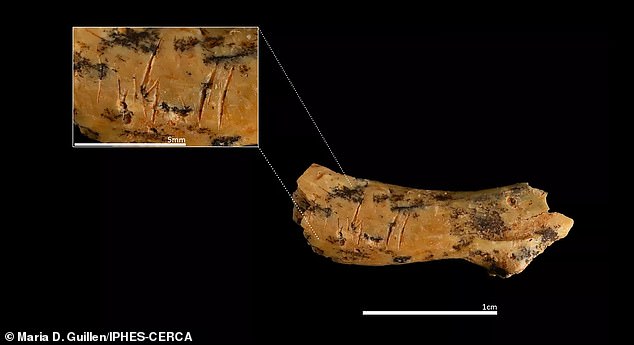
Cut marks on this child’s vertebra show clear evidence of cannibalistic practices, the researchers said
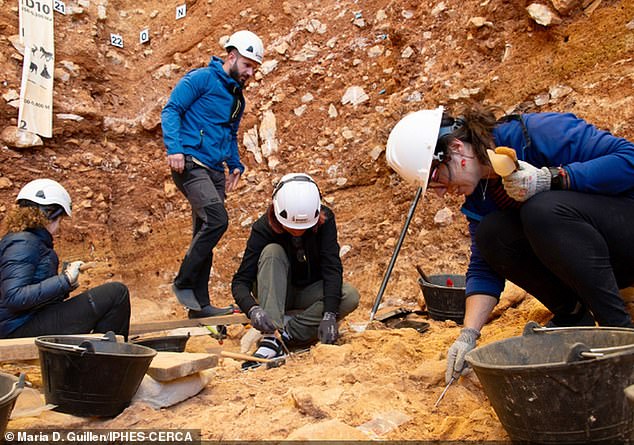
Excavation work at level TD6 of Gran Dolina, where the bones were unearthed. They belong to Homo antecessor, thought to be the last common ancestor of both Homo sapiens and Neanderthals
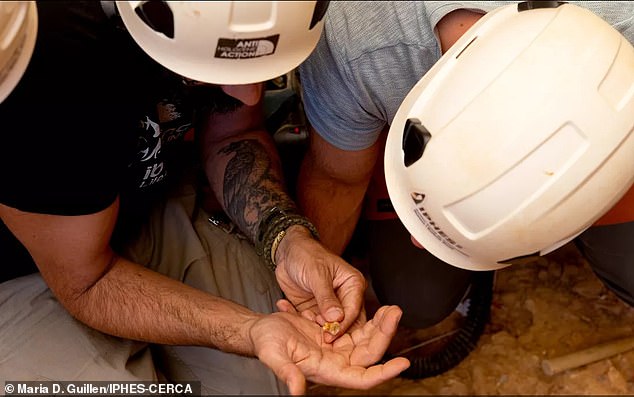
The team studying an 850,000-year-old tooth at the site, where excavations have been taking place for several decades
Experts say it is unusual to find evidence of a child being eaten and – if their theory is true – the discovery marks the earliest evidence of the practice to date.
Homo antecessor lived between 1.2 million and 800,000 years ago and were stockier and shorter on average than modern humans.
Their brain sizes were roughly between 1,000 and 1,150 cm³, which is smaller than the average 1,350 cm³ brains of people today.
The species is believed to have been right-handed, making it different from other apes, and may have used a symbolic language, according to archaeologists.
The site of the marks on the recently-discovered neck bone suggests the youngster was decapitated, the researchers said.
Other adult bones recovered from the site show evidence of de-fleshing marks and intentional fractures, similar to those found on animal bones consumed by humans.
‘The preservation of the fossil surfaces is extraordinary,’ Dr Saladié told Live Science.
‘The cut marks on the bones do not appear in isolation. Human bite marks have been identified on the bones — this is the most reliable evidence that the bodies found at the site were indeed consumed.’
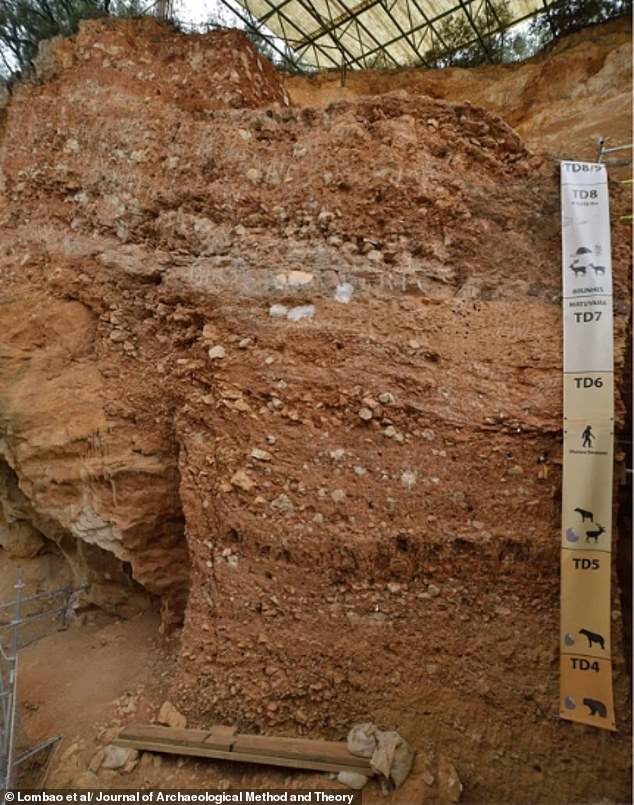
The most recent Homo antecessor remains were discovered at ‘Level TD6’ of the excavation site, at least 4 metres (13 feet) below the surface
The new findings strengthen the idea that these early humans exploited their peers as a food resource, the team said.
It could also have been a means of territorial control.
The most recent Homo antecessor remains were discovered at ‘Level TD6’ of the excavation site, at least 4 metres (13 feet) below the surface.
‘Every year we uncover new evidence that forces us to rethink how they lived, how they died, and how the dead were treated nearly a million years ago,’ Dr Saladié said.
Earlier evidence of cannibalism among early human relatives dates to 1.45 million years ago in Kenya.
Some archaeologists suggest that before formal burials, human populations would eat the dead as part of a funerary ritual.
‘What we are documenting now is the continuity of that behaviour: the treatment of the dead was not exceptional, but repeated,’ Dr Saladié added.
Previous examinations of skulls found at Cheddar Gorge, in Somerset, reveal early Britons were also cannibals and enjoyed drinking out of cups made form their victims’ heads.
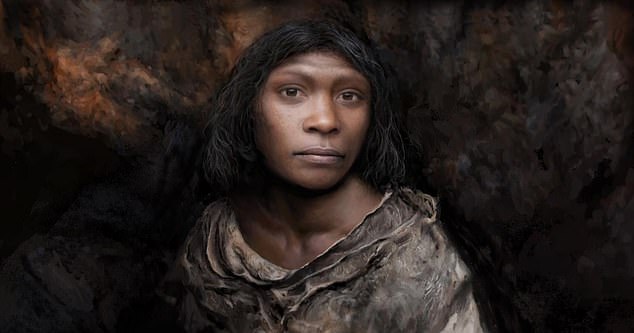
Earlier research into an 800,000-year-old skeleton at the site revealed it was a female (artist impression)
The cups, which date back 14,700 years, were likely used to drink water or even blood.
They may have been fashioned from the heads of vanquished enemies and used as trophies.
It is also possible that they were by-products of ‘crisis cannibalism’ – the resorting to human flesh when little or no other food was available, the study, published in Plos One, said.
To make the skull cups, the flesh and features were carefully stripped from the head, and the skulls fashioned into containers using flint ‘razors’ and cobble ‘hammers’.

